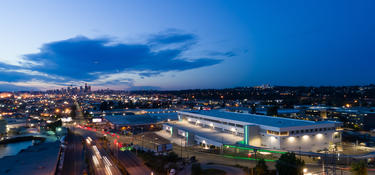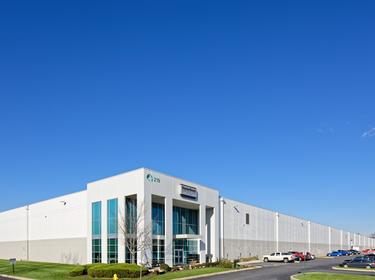
Manufacturing
According to NAIOP, the Commercial Real Estate Development Association, a facility designated for manufacturing is typically less than 20 percent office space and has loading docks for trucks and clear heights of at least 10 feet. There are two types of manufacturing buildings: heavy manufacturing and light assembly.
Heavy manufacturing properties tend to be large, often with tens or even hundreds of thousands of usable square feet. They usually contain heavy-duty (and often customized) equipment, three-phase electricity and a lot of loading dock space. Heavy manufacturing buildings usually require a complete top-to-bottom renovation when there’s a change in tenants because of the permanent fixtures often needed to perform heavy manufacturing.
Light assembly properties, on the other hand, are smaller, simpler and easier to move into because the interior of the building tends to be easy to reconfigure. Equipment in this type of industrial building is typically lighter and more portable because the parts being assembled are smaller than those made in a heavy manufacturing plant
Storage and Distribution
Storage and distribution properties are exactly what their names imply—buildings where products are stored and shipped to the end user. There are three types of storage and distribution spaces: distribution warehouse, general warehouse and truck terminal. While the size of these buildings varies, they typically break down into roughly 80 percent of the square feet assigned to storage space with no more than 20 percent of the square feet dedicated to offices.
A distribution warehouse is primarily used to ship goods. As a result, these properties tend to be located near the middle of the country and close to airports so products can be delivered quickly, regardless of where the buyer lives.
A general warehouse is one used predominantly for storing goods. Because goods are stored for longer periods of time, location isn’t typically as important.
Truck terminals aren’t warehouses so much as they are intermediate sites where goods are moved from one truck to another. These sites are devoted to transportation only, so they tend to have little to no storage space.
Flex Space
Flex properties are specially designed to serve multiple purposes. For instance, these buildings usually have more square feet dedicated to office space (often more than 30 percent). There are three types of flex properties: research and development, data centers and showrooms.
In a research and development space, a company uses the property to create, test and improve new and existing products. The space often contains labs, offices, testing spaces and some light manufacturing area. The products stored are for testing purposes only.
A data center is where a company keeps the equipment it uses to maintain network connectivity and store its data. These spaces tend to be large, usually at least 100,000 square feet. Further, they often require special wiring, security and cooling systems.
Showroom properties are a combination of offices, warehouses and showrooms. In most cases, at least half the space is used for showcasing and selling products. The most common type of industrial building in this category is a car dealership.



